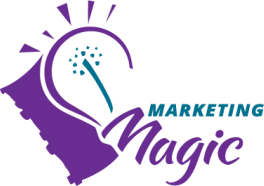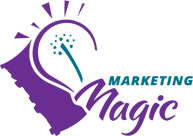"If you build it, they will come." That saying may have worked in the baseball movie Field of Dreams, but it doesn't hold true for website traffic.
There are more than four billion pages on the Internet, with seven million new pages being added each day. As a result, companies have to work hard to increase the visibility of their sites.
Studies now show that over 85% of the 391 million people online use search engines on a daily basis when they're surfing the Internet.
Searching the web for any one topic usually results in thousands of responses. Most people won't look past the first page of search results - 16% of Internet users only look at the first few search results and 56% don't look beyond page two.
So it's no mystery why search engine optimization (SEO) has become a hot topic. To rank high with search engines, companies must carefully consider their website's design and content, as well as choosing targeted keyword phrases.
PrinterOn Corp. in Kitchener is a business that offers Internet printing solutions for mobile professionals. Its public relations manager, Colleen Dietrich, is also responsible for the company's search engine optimization campaigns.
It may sound like a strange marriage of jobs, but Dietrich says her writing and other PR skills are useful for creating effective web copy that leads to higher rankings for the company in search engines.
PrinterOn began seeking ways to increase its website traffic two years ago. "The best way to find new customers," Dietrich says, "was to make sure they could find us!"
The search engine campaign focused on people who already had a need for the company's services and were likely ready to buy. It used a combination of search engine optimization, a pay-per-click (PPC) search engine marketing campaign and paid inclusion programs.
Pay-per-click is like advertising. You must pay the search engine firm a set amount each time a prospect clicks on your ad. For paid inclusion, you pay a fee and submit your company's content to search engines to be included. Note there is no guarantee of receiving a high rank with this method.
Dietrich says PrinterOn began with pay-per-click to drive results in the short term with the search engines Google (Adwords), Overture and Kanoodle. The next step was to optimize its web page content by writing copy to attract both prospects and search engine spiders.
(Spiders, or crawlers, build a search engine's database by visiting web pages, reading text, meta tags, and following links. This information is stored in an index. When people search for a topic, the search engine refers back to its index to find matches and then presents them ranked in order of relevance.)
Lastly, PrinterOn began a link building campaign, trying to get as many legitimate links to its site from other relevant sites. This builds the site's popularity with search engines.
Although still in its infancy, search engine optimization is becoming increasingly difficult. As the web continues to grow, so do the number of sites competing for top ranking with the same few critical keywords for each industry.
PrinterOn conducted its own keyword analysis. Dietrich asked, "What keywords would a searcher use to find our services?" She focused on keyword phrases to drive more qualified traffic to the site, for example, "hotspot printing services" instead of simply "printing."
Then she determined the company's current visibility on the Web, that is, what rank it received on different search engines. Dietrich also looked at competitors to understand who ranked number one for certain keywords and how they ranked for the same phrases PrinterOn was using.
"We educated ourselves as much as we could on how the search engine spiders work and made a checklist of improvements we could make to our site so it was crawler friendly for better overall indexing," says Dietrich.
PrinterOn measured campaign results through a series of tests. It would make a small change and see how it affected rankings before moving onto the next change.
Dietrich says she is pleased with the overall results of the campaign. "Our site traffic more than doubled in the first eighteen months."
Search engine optimization is not a one-time event, but an ongoing process. At PrinterOn, the work is continuing. The goal not just increasing traffic or getting better page rankings, but driving more qualified visitors to the site.
"And of course, we want to convert as many of our qualified visitors as possible to paying customers," Dietrich concludes.
Search Engine Tips
Improve the ranking of your business website by using:
There are more than four billion pages on the Internet, with seven million new pages being added each day. As a result, companies have to work hard to increase the visibility of their sites.
Studies now show that over 85% of the 391 million people online use search engines on a daily basis when they're surfing the Internet.
Searching the web for any one topic usually results in thousands of responses. Most people won't look past the first page of search results - 16% of Internet users only look at the first few search results and 56% don't look beyond page two.
So it's no mystery why search engine optimization (SEO) has become a hot topic. To rank high with search engines, companies must carefully consider their website's design and content, as well as choosing targeted keyword phrases.
PrinterOn Corp. in Kitchener is a business that offers Internet printing solutions for mobile professionals. Its public relations manager, Colleen Dietrich, is also responsible for the company's search engine optimization campaigns.
It may sound like a strange marriage of jobs, but Dietrich says her writing and other PR skills are useful for creating effective web copy that leads to higher rankings for the company in search engines.
PrinterOn began seeking ways to increase its website traffic two years ago. "The best way to find new customers," Dietrich says, "was to make sure they could find us!"
The search engine campaign focused on people who already had a need for the company's services and were likely ready to buy. It used a combination of search engine optimization, a pay-per-click (PPC) search engine marketing campaign and paid inclusion programs.
Pay-per-click is like advertising. You must pay the search engine firm a set amount each time a prospect clicks on your ad. For paid inclusion, you pay a fee and submit your company's content to search engines to be included. Note there is no guarantee of receiving a high rank with this method.
Dietrich says PrinterOn began with pay-per-click to drive results in the short term with the search engines Google (Adwords), Overture and Kanoodle. The next step was to optimize its web page content by writing copy to attract both prospects and search engine spiders.
(Spiders, or crawlers, build a search engine's database by visiting web pages, reading text, meta tags, and following links. This information is stored in an index. When people search for a topic, the search engine refers back to its index to find matches and then presents them ranked in order of relevance.)
Lastly, PrinterOn began a link building campaign, trying to get as many legitimate links to its site from other relevant sites. This builds the site's popularity with search engines.
Although still in its infancy, search engine optimization is becoming increasingly difficult. As the web continues to grow, so do the number of sites competing for top ranking with the same few critical keywords for each industry.
PrinterOn conducted its own keyword analysis. Dietrich asked, "What keywords would a searcher use to find our services?" She focused on keyword phrases to drive more qualified traffic to the site, for example, "hotspot printing services" instead of simply "printing."
Then she determined the company's current visibility on the Web, that is, what rank it received on different search engines. Dietrich also looked at competitors to understand who ranked number one for certain keywords and how they ranked for the same phrases PrinterOn was using.
"We educated ourselves as much as we could on how the search engine spiders work and made a checklist of improvements we could make to our site so it was crawler friendly for better overall indexing," says Dietrich.
PrinterOn measured campaign results through a series of tests. It would make a small change and see how it affected rankings before moving onto the next change.
Dietrich says she is pleased with the overall results of the campaign. "Our site traffic more than doubled in the first eighteen months."
Search engine optimization is not a one-time event, but an ongoing process. At PrinterOn, the work is continuing. The goal not just increasing traffic or getting better page rankings, but driving more qualified visitors to the site.
"And of course, we want to convert as many of our qualified visitors as possible to paying customers," Dietrich concludes.
Search Engine Tips
Improve the ranking of your business website by using:
- Optimized page text
All pages should be optimized for a few key search phrases. - Crawler-friendly navigation
Make sure a crawler can easily navigate your entire site. - In-bound links
Have links to your website from other popular websites. - Use of META tags
Create a unique and compelling title for every web page. - Search engine friendly website design
Avoid design features that cause problems for crawlers, such as flash, frames, and dynamic content.







